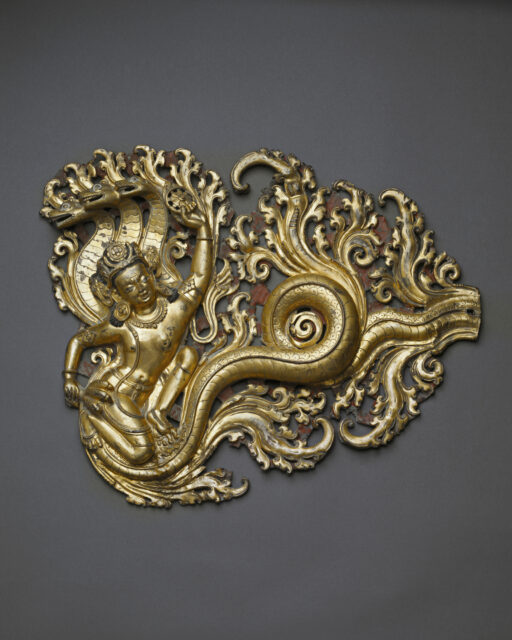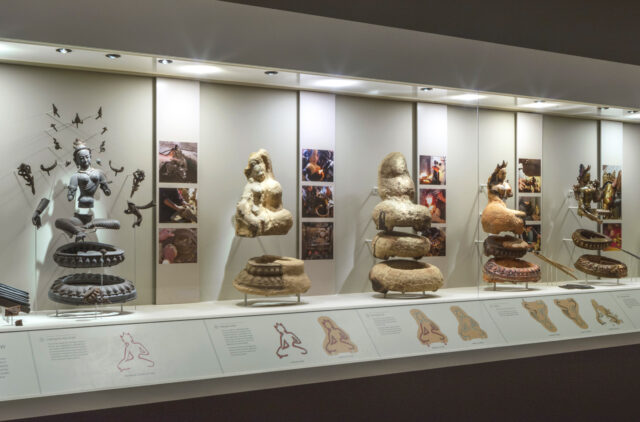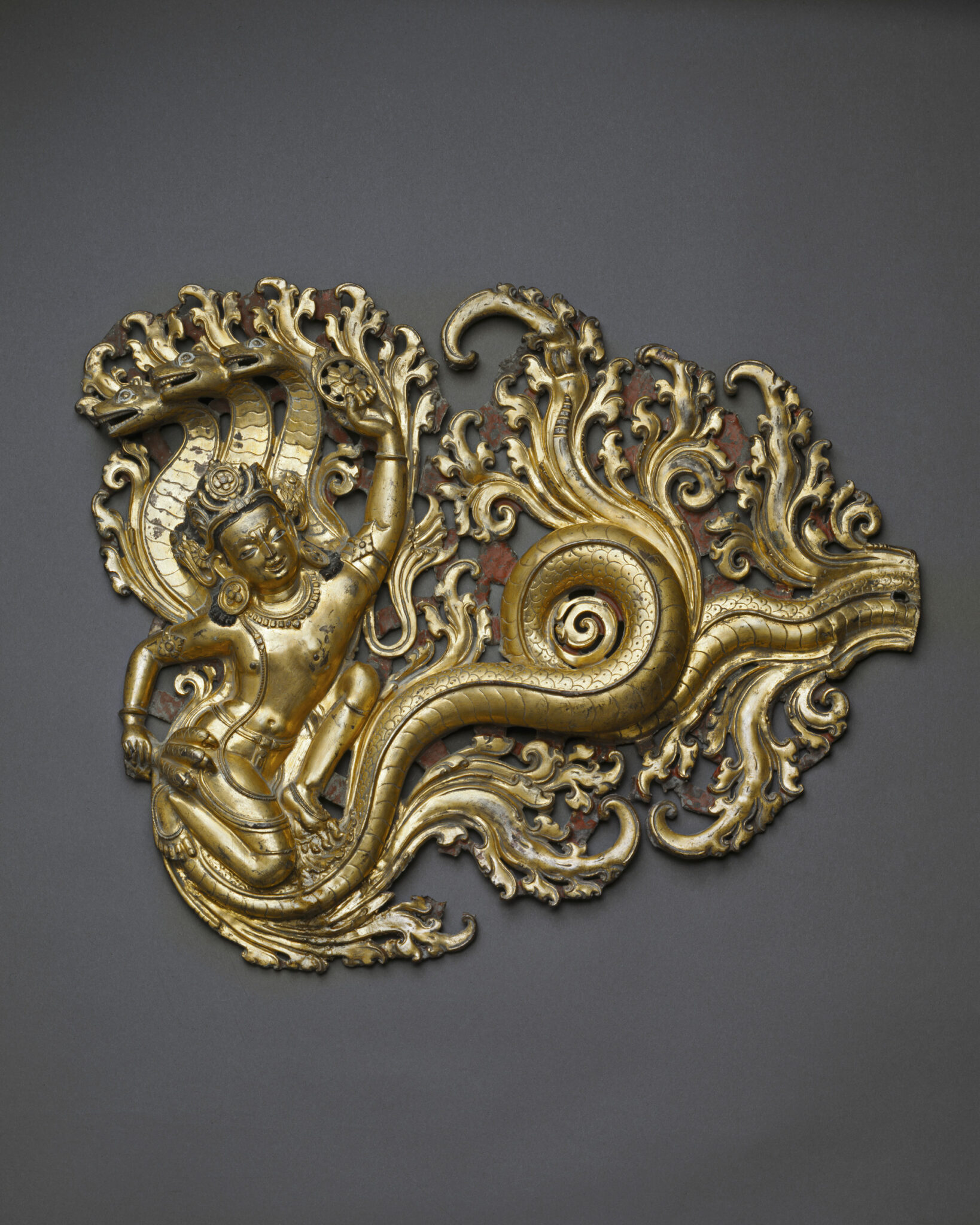
During the past few centuries metal has become the predominate medium for producing religious sculpture in the Himalayas.
Metal is shaped primarily by way of hollow or lost-wax casting and embossing, also known as repoussé. Both these methods thrive in Nepal, where craftsmen have formed workshops that specialize in these techniques and cater to Hindu and Buddhist patrons. The choice of creating an image by casting versus embossing is often an economic one. Given that casting requires more metal, large images and architectural decorations are usually made by embossing.
In this section
in this sectionEmbossing
Objects in the Exhibition
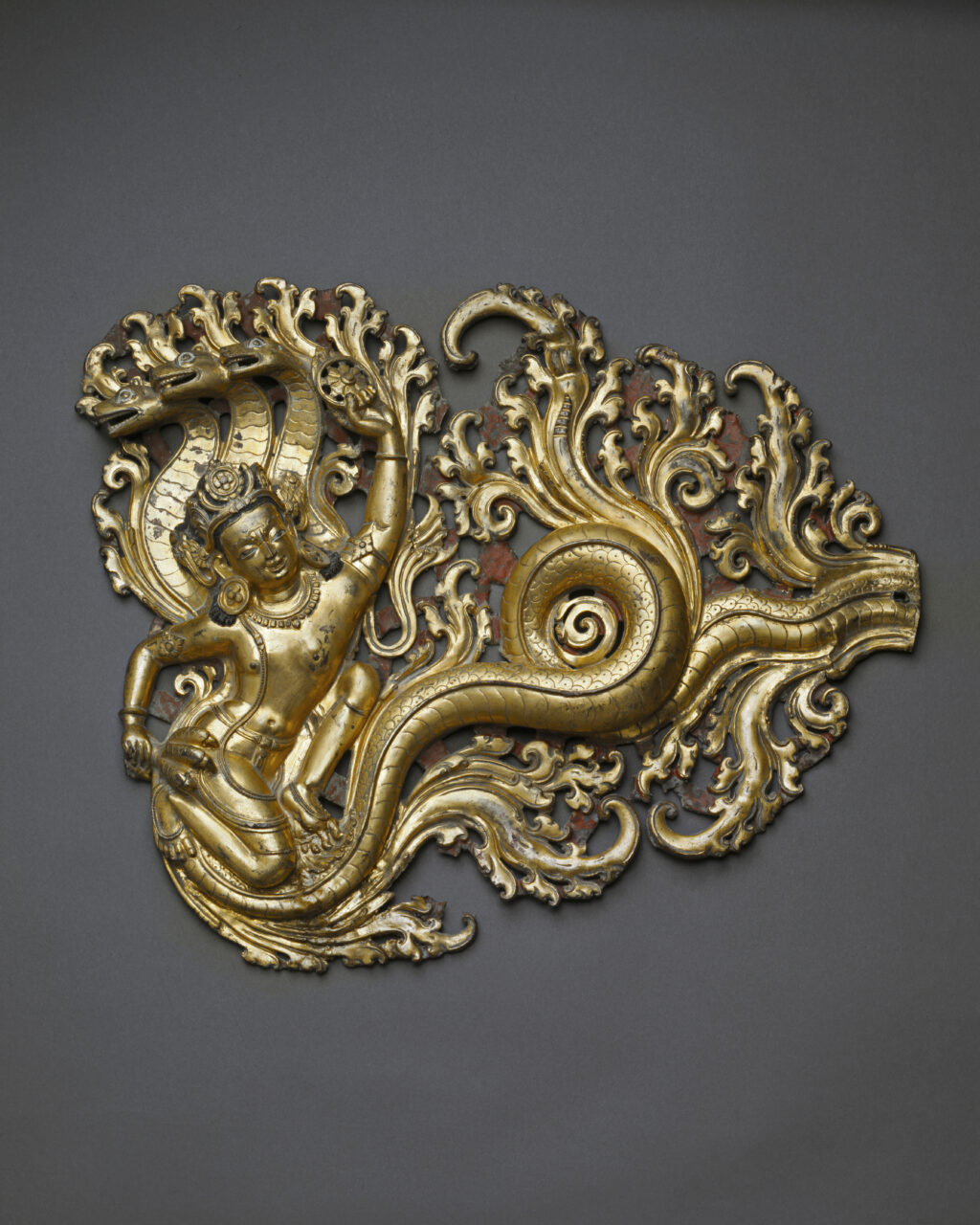
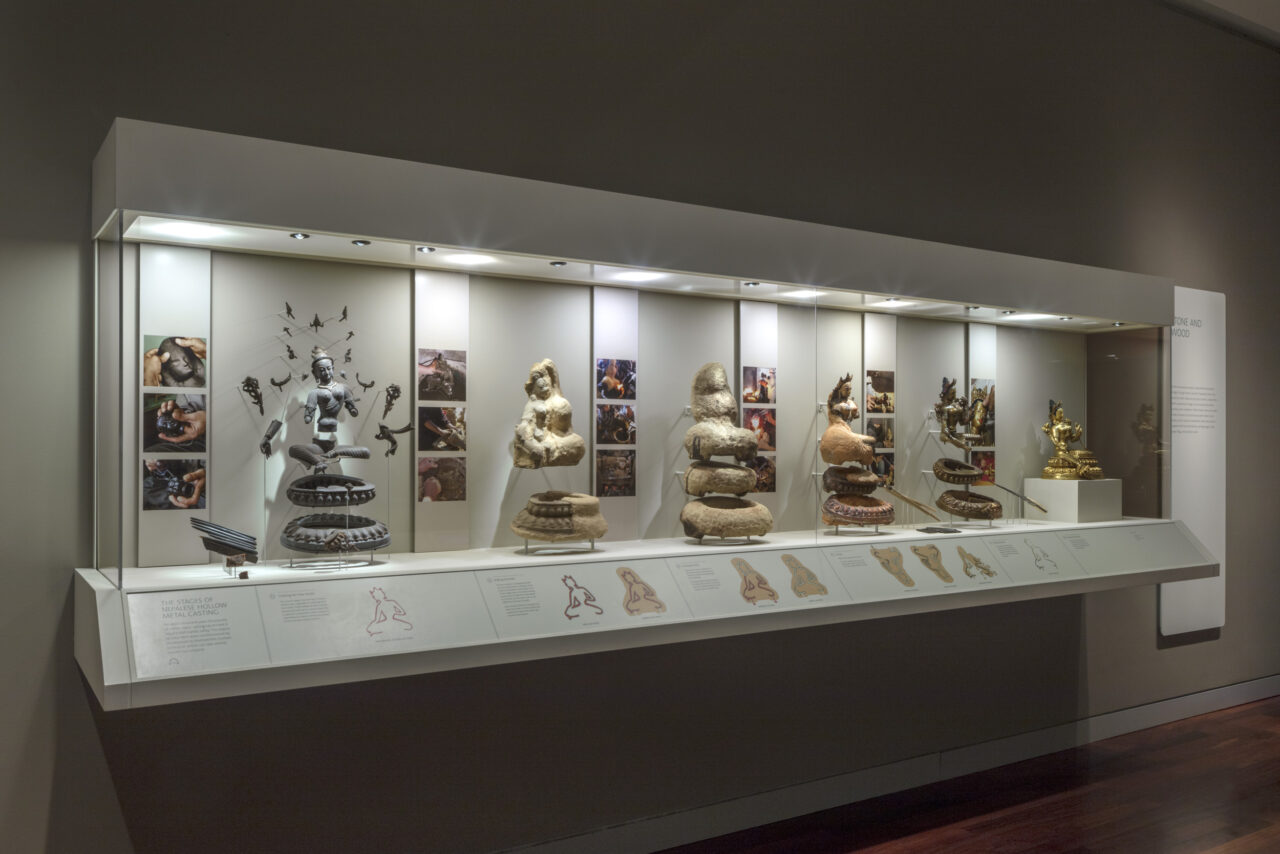
Related:
Lorem ipsum dolor sit amet consectetur adipisicing elit. Cum nihil placeat pariatur deserunt eius ullam incidunt maxime sunt ipsam. Ipsa, provident, laudantium, rem assumenda laboriosam veniam autem voluptas sint officia distinctio enim aut explicabo fuga animi voluptatum earum recusandae excepturi atque dignissimos iste? Exercitationem, praesentium eum. Harum ut maiores expedita exercitationem perspiciatis soluta aperiam dolores natus unde, sequi vitae debitis ex aliquam quas eum reprehenderit esse. Cumque amet et earum necessitatibus, repellendus ullam ducimus corporis architecto culpa placeat eum odit cum iure illo vitae rerum! Ullam et suscipit culpa? Eos voluptatum laudantium iste vero impedit adipisci maxime magni natus voluptatibus.
Sign up for our emails
Get the latest news and stories from the Rubin, plus occasional information on how to support our work.




